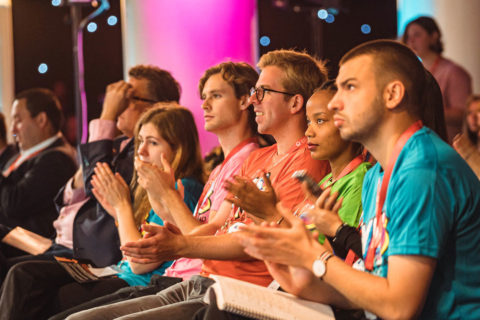Orlando Wood’s Lemon, published in October by the IPA, has set the advertising world talking with its bold analysis of the causes of advertising’s “crisis of creativity”. Lemon describes how a ‘left-brained’ way of paying attention to the world has become dominant in advertising, leading to work that is “flat and devitalised”, lacking humanity and depth. Could such a thing happen in research? Might it already have? To talk through the implications for insight, Orlando sat down with Tom Ewing, ex-System 1.
Tom Ewing: Lemon covers ground from the Roman Empire to the modern-day multiplex – in a nutshell though, what’s its big idea?
Orlando: Well, Lemon came out of a need to address a crisis of creativity in advertising – as Peter Field shows, ads are getting less and less effective. To explain why, I turned to recent work in neuroscience and psychology, which looks at the left- and right-brains and how they attend to the world. Across culture, advertising included, we’re seeing a swing to a left-brained view of the world which has led to work that doesn’t, in fact, work to build brands. It’s less likely to get noticed and remembered.
Tom: The left and right brains are quite old concepts – a lot of researchers will consider them debunked!
Orlando: That’s no doubt true – but as Iain McGilchrist, whose work I draw on in Lemon, puts it – the debunkers have themselves been debunked! The old view of the left and right brain was indeed discredited – the idea that each side was ‘in charge of’ different things – the right was ‘creative’, the left ‘analytical’, and so on. In fact, the difference is more subtle – it’s not that the left and right brain do different things, it’s that they do things differently. They pay attention to the world in different ways. The left is more focused, goal driven and a bit literal. The right is more holistic, taking in the bigger picture, and understands people and metaphor.
Tom: And what you’re saying is, at times the left-brained view of the world comes to dominate, and its obsessive focus and lack of perspective leads to flatness, repetition, a lack of humanity in culture and advertising. But what about research? A researcher’s job is to pay attention to the world, so if there has been a shift in thinking style, you’d expect it to manifest itself in what the industry’s interested in. While there’s arguably no creativity crisis in our business, there is a sense that research is becoming less valued and more commoditised. You say in Lemon that the left brain likes repetition and predictable outcomes. When you look at ESOMAR’s annual reports, you see a steady fall in how much basic research costs – all part of the industry’s drive to ‘scale’ solutions and charge less for them to increase their market share. Is the drive to automate cultural as much as economic?
Orlando: It could be. When I started writing Lemon I began with a thought-experiment – what would left-brained and right-brained advertising look like? And you could ask the same question of research. What would left-brained research look like? We might be seeing traces of it in the research world of today. The obsession with segmentation and precise targeting, for instance, is very suggestive of reductionist left-brained thinking (the left hemisphere likes to break things down into ever smaller parts) – segments of an audience, parts of the day, specific occasions or touchpoints. It’s also true to say that linear and literal ‘hierarchy of effects’ marketing models persist in the industry’s methods. Whereas the right brain understands people and the implicit, the left brain likes things, and creates tools to help it manipulate the world. Our industry is certainly very focused on technology and tools today. That’s not unique to research, of course, it’s part of the wider cultural shift and what happens in a period of left-brain dominance. Ideas about the thing become more important than the thing itself.
Tom: For my part, I’m interested in looking for signs of the left-brained approach in how research gets analysed and reported. I feel like there’s a tendency in research to focus on detailed, concrete questions and look for clear answers without ambiguity or nuance. Analysts stick to the data at hand, ignoring historical knowledge or the wider culture – which mirrors the decline of cultural references in advertising that you found in Lemon. And there’s a desire to simplify, classify and clarify all through the reporting, which can lead to relentlessly plain-spoken reports that avoid images, metaphors and humour, in favour of a parade of facts.
Orlando: Yes, metaphors are very important, they are not just linguistic ornament, but a vehicle for thought. We understand the world by drawing parallels with other things. This is how we open up new ideas, lines of enquiry and imbue them with sufficient energy to move companies forward. We mustn’t abandon reporting and reflecting entirely in favour of the perpetual present of the real-time ‘dashboard’. History, art and literature can offer an important source of inspiration for any researcher. Combine these with data science to achieve great creative leaps. Seeing the big picture is something research has always aspired to. As David Epstein points out in his excellent book Range, that’s better done with people who can make connections and think across disciplines.
Tom: It’s worth saying at this point that it’s not a case of left-brain bad, right-brain good. Both brains are needed to pay useful attention to the world. Someone does have to provide the detail and focus. Automation, clarity and simplicity are basically good things which save time and make research easier to use. The tricky part is identifying when you’ve had too much of a good thing and you’re starting to lose depth and richness.
Orlando: Yes, automation and scale give you enormous scope to learn things – large datasets underpinned by a standard approach can be extremely helpful. The problem comes when the right-brained ability to understand people or create an idea that might give your client’s business energy and direction, withers away. That’s when you need a reset.
Tom: So what would right-brained research look like? I get the feeling readers will be thinking, oh, qual research is right-brained, but I don’t think that’s right. You can have qual projects which fall into the trap of over-focusing on parts of a whole, for instance – and you can have quant projects that capture wider data or which are interpreted in a richer and more humanistic way, drawing in broader knowledge.
Orlando: As I say in Lemon, research can help us to widen our focus. There’s no substitute for understanding what other people feel and do; it helps you to step outside your own cultural bubble. This is invaluable and why testing is so important. The researcher needs their right brain, it’s what gives us our sense of time and place, helps us to see everything in its context as it really is, to understand the world as a set of complex connections and relationships, to appreciate ‘betweenness’ – the connection between people. A right-brained attentional style enables us to take the broader view, to empathise with the people revealed in the data; it makes for better research.
Tom: It’s all about not reducing people to data, isn’t it? Keeping the humanity alive throughout the research work. Making those right-brained connections rather than just answering questions. And keeping some of the mess and ambiguity intact, especially when that mess might be what sparks something in your client’s mind. One of the best stories in Lemon is the adman John Webster listening patiently to what his planner was telling him and then alighting on one tiny turn of phrase or observation which he could see held the kernel of something interesting. Maybe as researchers we’ve painted ourselves into a corner where insights are something we provide, as opposed to something we help our clients have for themselves.
Orlando: I think that’s right. Our job is as much to be useful as to give ‘answers’, and there is often something truly profound in the fleeting and the ambiguous. As Leonardo da Vinci said, ‘by indistinct things the mind is stimulated to new inventions.’ Something I show in Lemon is that great advertising makes you feel something – it provokes a response, often a physical one. What does great research feel like? What responses does it provoke? Nodding the head, getting up and pacing around excitedly, laughter or even tears. And that comes from paying attention to the right-brain – keeping the feeling in, allowing for metaphor, and being generous enough to let your clients enjoy that a-ha! moment for themselves.


